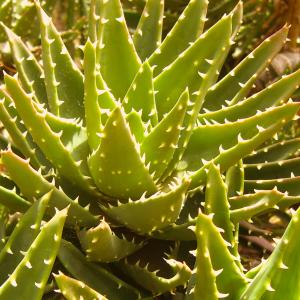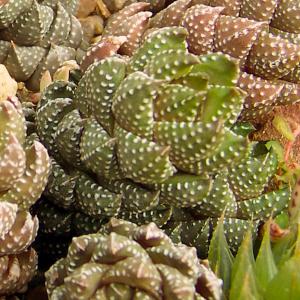文章
Dummer. ゛☀
2017年08月07日

Fungus happens. Even the most experienced and dedicated gardeners will experience fungal disease on plants at some point. Fungus can affect plants in any climate and hardiness zone because, like plants, certain fungal spores grow better in different climates.

Even new disease resistant varieties can suffer from these issues. As gardeners, we can choose to spend a fortune on different chemicals that can have residual effects to treat different symptoms or we can use a natural based product that has been used by growers and breeders for hundreds of years.

What is Lime Sulfur? Lime sulfur is a mixture of calcium hydroxide and sulfur. In horticultural dormant sprays, lime sulfur is usually mixed with an oil, like mineral oil, to make it stick to plant surfaces. These horticultural oil sprays contain a high concentration of lime sulfur that is only safe to use on plants that are dormant because the sulfur can burn leaf tissues. Lime sulfur can also be mixed in much weaker concentration with water for use when plants have leafed out. Even in lower concentrations and diluted with water, it is important not to spray lime sulfur on plants during hot, sunny days, as the sulfur can cause sunscald on plants. With warnings like this, you may wonder is lime sulfur safe? When used properly, lime sulfur is a safe and effective treatment of fungal diseases such as: Powdery mildew Anthracnose Black spot Blights Black rot As a horticultural dormant spray, lime sulfur is safe to use even on fruits that include: Raspberries Blackberries Blueberries Apples Peaches Pears Plums Cherries Lime sulfur is also used to treat fungal diseases of ornamental plants like: Roses Dogwoods Ninebark Phlox Rudbeckia.

How and to Use Lime Sulfur Fungal disease spores can overwinter in cracks or fissures on plants or in soil and garden debris. For this reason, lime sulfur is used in high concentrates mixed with oil as a horticultural dormant spray. When to use lime sulfur this way is in late winter or early spring before the plant begins to leaf out. It is also a good idea to spray the soil around plants that have been previously infected or are prone to infection. For perennials or plants that are showing new signs of fungal diseases, lime sulfur can be mixed with water and sprayed on plants anytime except for hot, sunny days. The mixing ratio is 1 tsp. per gallon of water. Spray all surfaces of the plant thoroughly. Allow the mixture to sit on the plants for 15-20 minutes. Then thoroughly rinse the plants with just clear water. Occasionally, you will notice the bottom portion of tree trunks covered with white latex paint. Sometimes, this contains a diluted mixture of lime sulfur.

Even new disease resistant varieties can suffer from these issues. As gardeners, we can choose to spend a fortune on different chemicals that can have residual effects to treat different symptoms or we can use a natural based product that has been used by growers and breeders for hundreds of years.

What is Lime Sulfur? Lime sulfur is a mixture of calcium hydroxide and sulfur. In horticultural dormant sprays, lime sulfur is usually mixed with an oil, like mineral oil, to make it stick to plant surfaces. These horticultural oil sprays contain a high concentration of lime sulfur that is only safe to use on plants that are dormant because the sulfur can burn leaf tissues. Lime sulfur can also be mixed in much weaker concentration with water for use when plants have leafed out. Even in lower concentrations and diluted with water, it is important not to spray lime sulfur on plants during hot, sunny days, as the sulfur can cause sunscald on plants. With warnings like this, you may wonder is lime sulfur safe? When used properly, lime sulfur is a safe and effective treatment of fungal diseases such as: Powdery mildew Anthracnose Black spot Blights Black rot As a horticultural dormant spray, lime sulfur is safe to use even on fruits that include: Raspberries Blackberries Blueberries Apples Peaches Pears Plums Cherries Lime sulfur is also used to treat fungal diseases of ornamental plants like: Roses Dogwoods Ninebark Phlox Rudbeckia.

How and to Use Lime Sulfur Fungal disease spores can overwinter in cracks or fissures on plants or in soil and garden debris. For this reason, lime sulfur is used in high concentrates mixed with oil as a horticultural dormant spray. When to use lime sulfur this way is in late winter or early spring before the plant begins to leaf out. It is also a good idea to spray the soil around plants that have been previously infected or are prone to infection. For perennials or plants that are showing new signs of fungal diseases, lime sulfur can be mixed with water and sprayed on plants anytime except for hot, sunny days. The mixing ratio is 1 tsp. per gallon of water. Spray all surfaces of the plant thoroughly. Allow the mixture to sit on the plants for 15-20 minutes. Then thoroughly rinse the plants with just clear water. Occasionally, you will notice the bottom portion of tree trunks covered with white latex paint. Sometimes, this contains a diluted mixture of lime sulfur.
0
0
成长记
Plants Encyclopdias
2016年08月17日

Name: Spleenwort
Latin: Asplenium antiquum
Origin: Asia
Plant height: 30 - 50 cm
Reproduction: #Spores
Difficulty level: #Easy
Tags: #Asia #Aspleniumantiquum

Latin: Asplenium antiquum
Origin: Asia
Plant height: 30 - 50 cm
Reproduction: #Spores
Difficulty level: #Easy
Tags: #Asia #Aspleniumantiquum

3
0
成长记
Plants Encyclopdias
2016年08月17日

Name: Mother spleenwort
Latin: Asplenium bulbiferum
Origin: Africa
Plant height: 50 - 100 cm
Reproduction: #Spores
Difficulty level: #Easy
Tags: #Africa #Aspleniumbulbiferum

Latin: Asplenium bulbiferum
Origin: Africa
Plant height: 50 - 100 cm
Reproduction: #Spores
Difficulty level: #Easy
Tags: #Africa #Aspleniumbulbiferum

2
0
成长记
Plants Encyclopdias
2016年08月17日

Name: Bird's Nest Fern
Latin: Asplenium nidus
Origin: Africa
Plant height: 50 - 200 cm
Reproduction: #Spores
Difficulty level: #Easy
Tags: #Africa #Aspleniumnidus

Latin: Asplenium nidus
Origin: Africa
Plant height: 50 - 200 cm
Reproduction: #Spores
Difficulty level: #Easy
Tags: #Africa #Aspleniumnidus

5
0
成长记
Plants Encyclopdias
2016年08月17日

Name: Glass Marble
Latin: Haworthia cooperi var. pilifera
Origin: Africa
Plant height: 15 - 20 cm
Reproduction: #Spores
Difficulty level: #Easy
Tags: #Africa #Haworthiacooperivarpilifera

Latin: Haworthia cooperi var. pilifera
Origin: Africa
Plant height: 15 - 20 cm
Reproduction: #Spores
Difficulty level: #Easy
Tags: #Africa #Haworthiacooperivarpilifera

3
0
成长记
Plants Encyclopdias
2016年08月17日

Name: Haworthia Papillosa
Latin: Haworthia papillosa
Origin: Africa
Plant height: 15 - 20 cm
Reproduction: #Spores
Difficulty level: #Easy
Tags: #Africa #Haworthiapapillosa

Latin: Haworthia papillosa
Origin: Africa
Plant height: 15 - 20 cm
Reproduction: #Spores
Difficulty level: #Easy
Tags: #Africa #Haworthiapapillosa

2
1
成长记
Plants Encyclopdias
2016年08月17日

Name: Haworthia Coarctata
Latin: Haworthia coarctata
Origin: Africa
Plant height: 15 - 20 cm
Reproduction: #Spores
Difficulty level: #Easy
Tags: #Africa #Haworthiacoarctata

Latin: Haworthia coarctata
Origin: Africa
Plant height: 15 - 20 cm
Reproduction: #Spores
Difficulty level: #Easy
Tags: #Africa #Haworthiacoarctata

3
0
成长记
Plants Encyclopdias
2016年08月17日

Name: Haworthia Bolusii
Latin: Haworthia bolusii
Origin: Africa
Plant height: 3 - 15 cm
Reproduction: #Spores
Difficulty level: #Easy
Tags: #Africa #Haworthiabolusii

Latin: Haworthia bolusii
Origin: Africa
Plant height: 3 - 15 cm
Reproduction: #Spores
Difficulty level: #Easy
Tags: #Africa #Haworthiabolusii

2
0






